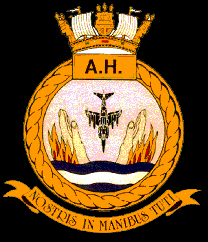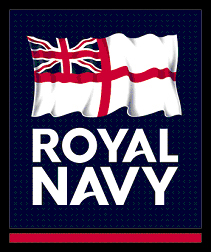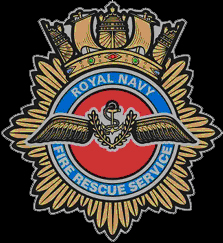

![]()



|
FIREVL FORUM |
|
|
State One T-8 Harrier by LA(AH) Paul Dunnell “ STATE 1 STATE 1 STATE 1 CRASH ON THE AIRFIELD. A T-8
AIRCRAFT FROM 899 SQN HAS CRASHED ON THE RAMP GRID REF LIMA SEVEN, BOTH PILOTS
SEEN TO EJECT. SAFETY SERVICES CLOSE UP”. I was the Leading Fire fighter in charge of the MFV
(major foam vehicle) when the call came in. The RIV Crew (Bandit Berryman, Wayne
Weaver and Robbie Robinson) were over having a coffee with some friends at 702
SQN. My initial thought was here we go again another false alarm but that was
about to change. I ran out to the MFV and looked out across the
airfield, that’s when it struck home that this time it was real. I could see
the parachute of one of the pilots slowly drifting down wind and a T-8 Harrier
sat at a very funny angle in front of the dummy deck ramp. (A replica of an
Aircraft Carrier Flight Deck). As our priorities are the safety of the Pilot I decided to go straight to
the pilot I could see. We left the
garage at a healthy speed just in time to see the RIV man up and get mobile to
the incident. On route I was calling on the radio to cross various parts of the
airfield and my head is racing. I had recently finished my Leading Rates
Professional Qualifying course two months previous, and now I was trying to
recall everything I had learnt. We approached the dummy deck and I saw one of the pilots lying motionless
on the floor, the other had got himself to his feet and was running towards us.
The vehicle pulled up and I jumped out and I ran towards the pilot on the
ground. He called out to me saying that he was all right and that he didn’t
want to be moved I told him I had no intention of moving him. As there were no obvious signs of injury other than his painful back and
a rather dazed look I told my monitor man (Martin Parry) to remain with the two
pilots until relieved by the medic. It was at this point, I realised that my
mind had stopped racing and the training had taken over. I know it’s the old
cliché but it really does. Now my attention turned to the crashed aircraft. Taff Rees
the driver and I pulled up to the incident. I could see that the RIV had
deployed at the crashed aircraft and the monitor and both sidelines brought into
operation laying a good foam blanket around the aircraft. Immediately I told my driver to run out two lengths of hose
from his sideline. While he was doing that I got the short rescue ladder and ran
to join the other Leading Hand from the RIV (Wayne Weaver). He footed the ladder
as I climbed up to “make safe” the aircraft switches. There is a split second pause while I assess what I’m
confronted with. It’s strange looking at a harrier cockpit with no seats, no
canopy and two great big poles sticking out of the top. Then it’s on with what I’m doing firstly the H.P. fuel
cock needs turning off, “damn” I can’t pull it back as the guides are too
badly distorted. I went on to the next job the L.P. cock “s**t” not again. Due to the frontal impact with the ground the switch panel in
front of the L.P. cock had been forced back holding it open. “What’s next”
I ask myself, my third and final task, the battery master switches. The whole panel with the switches on had been twisted over to
the right and forced out through the airframe making the switches pretty
indistinguishable. I managed to spot one of the switches and turn it off, but I
couldn’t find the other. I got Wayne to see if he could spot it, he couldn’t. Unable
to carry out my tasks to make the aircraft safe I informed Bandit the Crew Chief
that we needed technical support on scene to assist. Technical Support soon arrived and informed me that I could
use brute force to make the throttles safe. The L.P. needed a little persuasion
from a screwdriver. The Technical Chief managed to locate the other battery
master and isolate it. That complete there was the small matter of some smoke
issuing from the aircraft’s APU. After
removing some panels it turned out to be nothing more than steam. While all this had been going on other crewmembers started
appearing backing us up with extra Fire Vehicles for fire cover. When I
eventually came down from the aircraft I noticed my monitor man was back. Martin
told me the medic had relieved him and had taken the pilots back to the sick bay
in the ambulance. Once the incident was done and dusted I had time to reflect
on what had happened. Both pilots were lucky to have got out safely even if they
did suffer some minor injuries and due to the rapid response of the emergency
services the incident was dealt with in a safe and professional manner. In this line of work you don’t get called out that often so
it’s good to know that you can deal with it and that as a team you can put
into practice what you have learnt and trained for. LA(AH) Paul Dunnell
|
Send mail to
sfc@firevl.co.uk with questions or
comments about this web site.
|